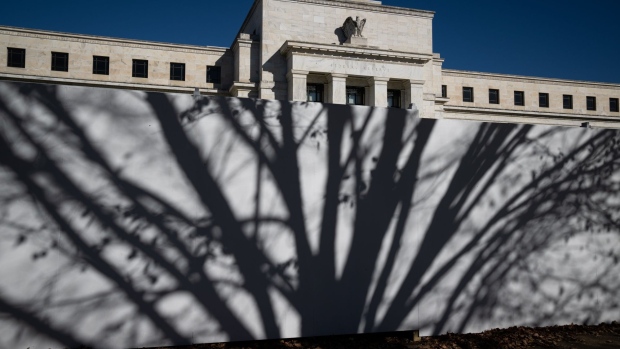Mar 13, 2023
Everything We Know About How the Fed Is Handling the SVB Crisis
, Bloomberg News

(Bloomberg) -- The collapse of Silicon Valley Bank was swift and brutal, and left much of the world wondering what would come next. As the only publicly traded bank focused on Silicon Valley and startups, the collapse sent ripples through both the tech and finance industries.
Fearing contagion would upend the industry, the US Federal Reserve, Treasury Department and Federal Deposit Insurance Corp. moved quickly over the weekend to protect customer deposits and shore up confidence in the banking system. Here’s everything we know right now on the second-largest US bank failure in history:
How did Silicon Valley Bank collapse?
On March 8 the bank’s parent company, SVB Financial Group, announced it had sold $21 billion of securities from its portfolio at a loss of $1.8 billion and would sell $2.25 billion in new shares to shore up its finances. That spooked prominent venture capitalists such as Peter Thiel, who instructed clients to pull their money from the bank.
Just two days later, efforts to raise new equity or find a buyer were abandoned and SVB was put into receivership, sending chills through the banking industry.
What does the collapse of SVB mean for depositors?
As the health of the financial system came under scrutiny, the US pledged to fully protect all SVB depositors’ money, in a bid to stem runs on other financial institutions. That was of particular consequence to those whose accounts held more than $250,000 — typically the threshold for insurance payouts, and representing almost all of the bank’s domestic deposits. The government said customers would have access to their cash on March 13, and that taxpayers would not be liable for any losses accrued as a result of the action.
Will contagion spread to other banks?
Following the implosion of SVB, shares in a number of other regional lenders plummeted on fears of contagion, while a senior Treasury official warned other banks were in similar situations to SVB. On Sunday, as well as vowing to protect depositors’ cash, the Fed announced an emergency lending program to give cash-squeezed banks easier terms on short-term loans.
So what happened to Silvergate and Signature?
While SVB was unravelling last week, two other lenders were struggling for survival. Silvergate Capital Corp. and Signature Bank were both ultimately victims of their ties with the crypto world. Silvergate announced it would wind up operations and liquidate after the crypto industry’s meltdown — sparked by the fall of FTX — sapped the bank’s financial strength and sent shares tumbling. And Signature was closed by New York State regulators Sunday following a deluge of deposit outflows on Friday. Depositors there will have the same protections as those at SVB.
What happens to SVB now?
After becoming the second-largest US bank collapse ever — behind only Washington Mutual during the global financial crisis in 2008 — SVB’s assets were put up for auction by the Federal Deposit Insurance Corp. The auction was due to end Sunday. It is not yet known if there were any bidders.
What will the Fed do next?
Less than a week after Fed Chair Jerome Powell opened the door to a re-acceleration in the pace of interest-rate increases, that suddenly looks less likely. Investors are now betting that the shocks to the finance system will herald a smaller rate hike than had been expected, as the Fed balances concerns about financial strain with its desire to bring down inflation.
What effect has SBV’s collapse had overseas?
While government assurances may have given the US banking sector some room to breathe, attention is turning to the bank’s global footprint. UK authorities have indicated they will provide immediate support to depositors to allow companies to pay their staff and meet cash flow obligations, without providing further details. SVB’s joint venture in China, SPD Silicon Valley Bank Co., was also seeking to calm local clients by reminding them that operations have been independent and stable.
How have global markets reacted to the US moves?
US stock futures rallied more than 1% and Treasuries rose on news that the US would backstop depositors and shore up the banking sector. While the dollar slid, the yen strengthened and gold rose as investors sought havens from the turmoil.
©2023 Bloomberg L.P.


